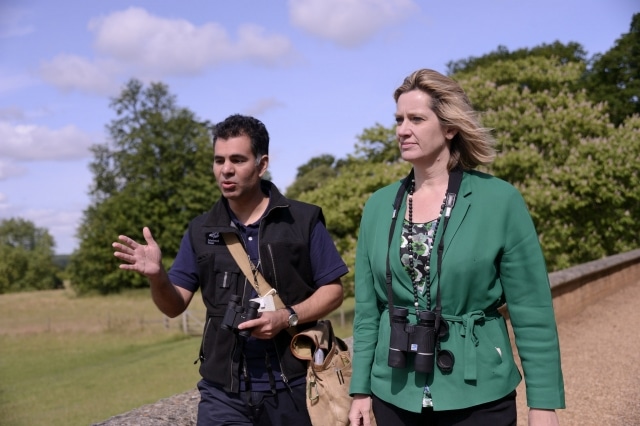This is Part 2 in our Amber Rudd series where DeSmog UK looks at her burgeoning political career.
Observers disagree about whether Energy and Climate Secretary Amber Rudd is a ‘Turquoise Tory’, a conservative with a small ‘c’, or whether in fact she is merely a career politician serving the powerful. Will she stand on principle in Paris, or quietly toe the corporate line?
There are important clues to be found from her life story. Part 2 of this story explores how Rudd gained political prominence over the years.
Career Politician
It was only 10 years ago that Rudd decided to leave the finance world and enter politics. She made a life-changing decision at the age of 40. She decided to “take [her] life back” and “really point it in the direction I want it to go.”
So, in 2005, at age 42, she turned to politics, fighting for a seat in Liverpool Garston – a safe Labour seat. Rudd came in third. The next year proved more successful though as she was selected for the marginal, but still traditionally Labour, seat of Hastings and Rye.
A burgeoning career politician, Rudd subsequently picked up and moved to Hastings, where she continued her writing and freelance recruitment business until the May 2010 election where she was elected as a Conservative MP for the East Sussex constituency with a majority of 1,993.
No Connection
When asked by the Financial Times why she decided to run in a constituency to which she had no personal links, Rudd responded: “I wanted to be within two hours of London and I could see we were going to win it.”
It was during the coalition government that Rudd’s political prominence began to build. From 2010-2012 she was a member of the Environment, Food and Rural Affairs Committee. During this time she was also a member of the 301 group.
Described as “perhaps the most active and important group of backbench Tory MPs” and “the most pro-Cameron of all the backbench groups” at the time, the group’s main aim was to secure a Conservative majority at the 2015 election. Indeed, it’s name is derived from the fact that 301 Tory MPs were needed to form a majority government. And it seems to have worked.
So how did Rudd make the leap from local MP to Secretary of State? Part 3 of our series looks at her close ties to Chancellor George Osborne.
Photo: DECC via Flickr
Subscribe to our newsletter
Stay up to date with DeSmog news and alerts







